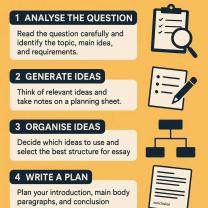Why should electronic devices be allowed in schools?
The use of electronic devices in schools can offer several benefits when implemented thoughtfully and responsibly. Here are some reasons why allowing electronic devices in schools can be beneficial:
Access to Information: Electronic devices provide students with instant access to a vast amount of information. This can enhance research skills, encourage self-directed learning, and allow students to explore topics beyond traditional textbooks.
Digital Learning Resources: Electronic devices enable the use of digital textbooks, educational apps, and online resources. These resources can be interactive, engaging, and adaptable to different learning styles, providing a more dynamic and personalized learning experience.
Preparation for the Digital Age: Integrating electronic devices prepares students for the digital world they will face in their future careers. Familiarity with technology is increasingly important in various professions, and incorporating it into education helps students develop relevant skills.
Enhanced Collaboration: Electronic devices facilitate collaborative learning. Students can work together on projects, share documents, and communicate easily, fostering teamwork and communication skills that are valuable in both academic and professional settings.
Individualized Learning: Electronic devices allow for differentiated instruction. Teachers can tailor assignments and activities to individual students' needs, helping them progress at their own pace and providing additional support when necessary.
Improved Organization: Electronic devices can assist students in staying organized. Apps, calendars, and note-taking tools help students manage assignments, deadlines, and schedules, promoting responsibility and time management skills.
Engagement and Motivation: The use of technology in the classroom can make learning more engaging and interactive. Educational games, simulations, and multimedia content can capture students' attention and make lessons more enjoyable, potentially increasing motivation to learn.
Accessibility and Inclusivity: Electronic devices can be beneficial for students with diverse learning needs. Accessibility features, such as text-to-speech or speech-to-text functionalities, can support students with disabilities, ensuring a more inclusive learning environment.
Real-World Skills Development: Learning to responsibly use electronic devices teaches students digital citizenship, critical thinking, and information literacy. These skills are crucial for navigating the complexities of the digital world.
Parent-Teacher Communication: Electronic devices can facilitate communication between parents and teachers. Schools can use online platforms, emails, or messaging apps to keep parents informed about their child's progress, upcoming events, and school announcements.
While there are clear benefits, it's important to note that effective implementation and management of electronic devices in schools require thoughtful planning, consideration of privacy and security concerns, and ongoing professional development for educators. Additionally, policies should be in place to address issues such as screen time, internet safety, and equitable access to technology.
The Case for Electronics in Education
The debate about electronic devices in schools has been ongoing for years, with passionate arguments on both sides. However, a growing body of research and successful implementation examples showcase the potential benefits of integrating technology into the learning environment. Let's explore why embracing electronic devices in schools can be valuable and how they can enhance the learning experience.
1. Why Allow Electronics in Schools?
Engagement and Motivation: Interactive digital tools like educational apps, simulations, and virtual reality experiences can make learning more engaging and keep students motivated.
Personalized Learning: Technology allows for personalized learning pathways, catering to individual student needs and learning styles. Adaptive learning platforms can adjust difficulty levels and suggest relevant resources based on each student's progress.
Collaboration and Communication: Digital tools like online platforms and collaborative apps can facilitate teamwork, communication, and project-based learning, preparing students for real-world collaboration skills.
Global Access to Information: The internet opens doors to a vast world of information and resources, fostering curiosity, research skills, and critical thinking.
Development of Digital Literacy Skills: Integrating technology into the curriculum equips students with essential digital literacy skills needed for success in the 21st century, from research and information analysis to online communication and collaboration.
2. Enhancing the Learning Experience:
- Interactive Learning: Interactive whiteboards, tablets, and educational software can turn passive learning into active exploration and discovery. Students can manipulate virtual models, conduct experiments, and visualize complex concepts in ways traditional methods might not allow.
- Differentiated Instruction: Technology can cater to diverse learning styles and abilities. Audiobooks and text-to-speech tools can assist students with reading difficulties, while visual aids and simulations can benefit kinesthetic learners.
- Real-time Feedback and Assessment: Online quizzes, polls, and immediate feedback tools allow teachers to assess student understanding in real-time and adjust their teaching methods accordingly. This personalized feedback loop can improve learning outcomes.
- Project-based Learning: Collaborative platforms and digital tools enable students to work together on projects, research real-world problems, and present their findings in creative ways, fostering critical thinking, problem-solving, and communication skills.
- Global Connection and Collaboration: Online platforms and video conferencing tools connect students with their peers around the world, allowing for cultural exchange, collaborative projects, and diverse perspectives.
3. Success Stories:
Several schools around the world have successfully integrated technology into their curriculum, showcasing its positive impact on student learning and engagement. Here are a few examples:
- Flipped Classroom Model: In this model, students learn core concepts through online lectures or videos at home, while classroom time is used for interactive activities, discussions, and problem-solving, leading to deeper understanding and active participation.
- One Laptop per Child (OLPC) Program: This initiative equips children in developing countries with laptops loaded with educational software, fostering independent learning, digital literacy, and access to information even in resource-limited settings.
- Khan Academy: This online platform offers free educational resources and personalized learning pathways, allowing students to learn at their own pace and master concepts effectively.
Remember, successful integration of electronic devices requires careful planning, teacher training, and clear guidelines for usage. It's not about replacing traditional methods but rather using technology as a tool to enhance learning and prepare students for the digital world.
By embracing the potential of technology in education, we can create engaging and effective learning environments that empower students to thrive in the 21st century.












